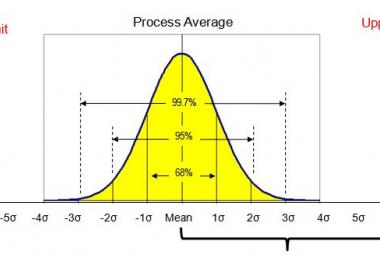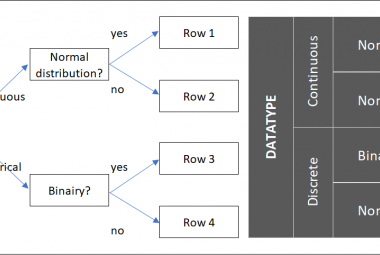“Toyota Kata” by Mike Rother (2010) distinguishes itself from other books on the Toyota Production System in the way he describes the means of the tools that are used in Lean implementations. Tools like Heijunka (leveling of production) and Kanban are used within Toyota not with the goal to be implemented, but as a tool to find the next improvement.
The continuous learning necessary to implement the tools is described by Rother as the improvement Kata, where Kata is Japanese for ‘organizational routines’. In addition to the improvement kata Rother also describes a Coaching Kata, which describes the need to coach people in sustaining the improvements in their processes.
Toyota Kata is a management book based on the basic principle that Lean is a culture, a management philosophy. I can recommend this book to managers who are managing organizational change.
Because the approach Rother describes requires changes in organizational structure, I would also recommend management team members to read the book, to understand how the tools created at Toyota have come about and how they work in continuously.
The book Toyota Kata consists of four parts, of which three are described in this article: the Improvement Kata (Part 3), the Coaching Kata (part 4) and Objectives for replication (section 5).
Part three of the book describes the IMPROVE KATA in two chapters. A chapter on setting a target condition and a section on moving towards the target condition. The target condition can be explained as the ‘objective conditions’ which Rother describes as: ”a description of a process that functions in a certain way”. The target condition describes a desirable state of a process which employees strive to achieve through continuous improvement. Rother describes that tools such as Heijunka, takt time and Kanban are referred to as target conditions which give direction to improvements instead of tools that you may or may not apply in your organization:
- Takt Time is traditionally used to determine the speed of production. However, Toyota also used takt time to visualize variation in production quantities with the goal to minimize that variation (or mura).
- Heijunka is traditionally only used in factories where changeover times and variations are minimal, because heijunka is then relatively easy to implement. However, those organizations with difficult changeovers and high changeover times have the highest potential for improvement towards a balanced production flow.
- Kanban is used to move batches of product between workstations. The best possible production system however, in production terms, is to create one-piece flow to eliminate waiting times and inventories. The purpose of Kanban is to visualize the routes in which products move throughout the plant so that it can be improved. The Kanban is actually implemented with the goal to eliminate itself.
When the target condition is defined, Rother describes the need to improve the current state of the processes by using the Plan-Do-Check-Act (PDCA) cycle. PDCA is based on the principle of experimentation and learning. An experiment is planned (Plan), implemented (Do), and when the results are positive (Check) the results are documented in standard work (Act).
At Toyota, five questions are asked to guide improvements towards the target condition: What is the target condition? (1) what is the current state of the process? (2), what obstacles are you working on now which prevent us from reaching the target? (3), what is your next step? (PDCA cycle) (4) and when we can see the result of this step? (5). Asking these questions will motivate employees to experiment more. These 5 questions are known as the five coaching questions and should be tought to every manager to be used during their gemba walks (Panneman, 2017). One way of embedding this in the standard way of working is creating leader standard work.
Part four of “Toyota Kata” describes COACHING KATA, again explained in two chapters. Who will carry out improvements within Toyota (1) and what kind of leadership is necessary (2). Rother describes the misunderstanding that operators implement all improvements in their processes. In practice, 90% of the improvements to reduce costs and improve quality at Toyota are made by Team Leaders and engineers. The remaining 10% is improved by the operators themselves throughout a kaizen suggestion system. The aim of these 10% is to practice identifying improvements in processes to select suitable future team leaders.
Rother describes two leadership style features, which correspond to two of the principles that Liker (2004) describes in The Toyota Way. A leader is a teacher (1), and plan slowly – act quickly (2). All executives in the organization should spent 50% of their time coaching others. Managers do not provide the answer to problems but coach people so they can find their own answers. Coaching enables employees to use the PDCA cycle and can be linked to A3 forms. Filling an A3 takes a relatively long time, but serves both as a communication tool as well as documentation.
Section 5 describes how THEORY IS PUT IN PRACTICE. First, Rother argues that the improvement kata should be used to start up the improvement kata. This means the PDCA should be used to train people within your organization to improve. In addition, the improvement kata should be facilitated by internal employees and the management team should particulary play an important role. It is impossible to have the improvements implemented by a consultant, because those changes will not have the necessary support from the employees which have to work with the changed processes.
POSITIVE IMPACT
One of the most valuable information Rother describes as part of Toyota’s production system is the detailed description of the improvement kata. Where Liker (2004) does not really explains how improvements in Lean organizations are actually made and Suzaki (1993) is focused on the responsibilities for improvements to the operators, Rother describes that operators should lead the improvement process by generating ideas, but capacity for actual improvements should come from facilitators and engineers. In practice this makes sense because operators must focus on value-added manufacturing activities. Operators should also be closely involved in the improvement process in defining standard work.
In order to carry out the right experiments Rother defines the Target Condition, to facilitate learning towards a certain direction. Using a target condition results in measurable results faster than random improvements. Input from operators can be gained through asking specific questions: how can we ensure that the change-overs are reduced to 10 minutes?” instead of “what can you do to improve?”, or “How can you reduce waste?”.
Continue to
The Toyota Way - J.Liker (summary)
REFERENCES
Liker, J., 2004, The Toyota Way, 14 management principles from the world greatest manufacturerNew York: Mc-Graw Hill (summary / order this book)
Panneman, T, 2017, Lean Transformations - when and how to climb the four steps of Lean maturity, Maarssen (NL): panview (summary / order this book)
Suzaki, K., 1993, The New Shop Floor Management, empowering people for continuous improvement New York : Free Press (order this book)
Rother, M., 2010. Toyota Kata: Managing people for Improvement, Adaptiveness and Superior Results, New York: Mc-Graw Hill (order this book)












